Skate sharpening is a fine art that ensures skaters glide effortlessly on ice. Whether for figure skating or hockey, sharp skates are crucial for peak performance.
This article will demystify what do sharpened skates look like and highlight the benefits of keeping them in prime condition.
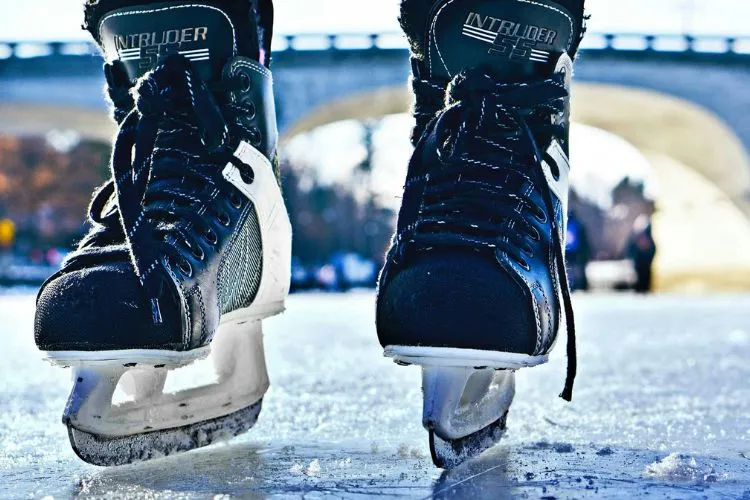
The Basics of Skate Sharpening
The process of skate sharpening involves grinding a concave groove into the blade with precision equipment. This groove, known as the hollow, runs the length of the blade.
Sharpening skates is not just about aesthetics; it is about safety and performance. A sharpened blade provides better traction on ice, allowing for quicker turns and stops.
What Do Sharpened Skates Look Like?
When you look at a pair of sharpened skates, you should see shiny, smooth edges free from nicks or blemishes. These edges can reflect light, indicating a smooth surface. The hollow, or groove, should be clear and consistent.
However, do not check the sharpness with your fingertips as it might lead to cuts. Instead, gently feel for burrs or roughness that signifies a blade needs attention. The edge should gently catch on the skin, signaling sharpness without danger.
The Role of the Hollow
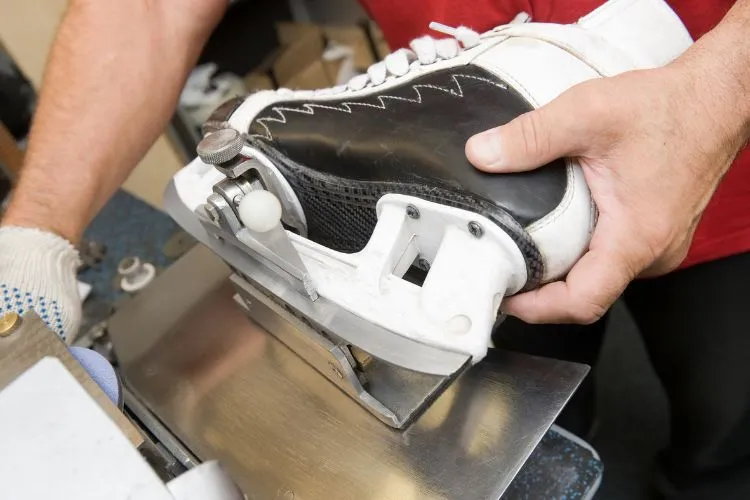
The hollow is fundamental to skate performance. The depth of the hollow can vary depending on one’s weight, style of skating, and ice conditions.
A well-maintained hollow appears uniform in depth and curvature. When passing a thumb over the blade, a freshly sharpened skate’s hollow will offer slight resistance.
Maintenance Tips
Skates should be sharpened based on how often they are used and the skater’s skill level. For example, professional athletes might sharpen their skates before each game. Recreational skaters might need to sharpen their skates every few weeks.
If you feel slipping on the ice or difficulty in maneuvers, it likely means it’s time for a sharpening. Keep blades dry and protected with skate guards to maintain the edge.
Common Misconceptions about Sharpened Skates
Some believe extremely sharp skates are dangerous or that all skates are sharpened in the same way. In truth, the right sharpness enhances control and safety. Also, sharpening is customized to the skater’s needs.
Choosing the Right Sharpening for Your Skates
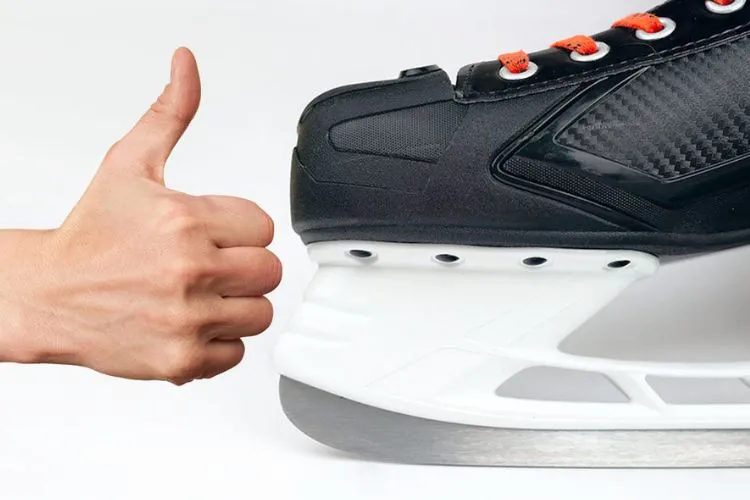
Skaters can consult with professionals to choose their ideal hollow depth. A professional can understand your style and needs and provide advice on the best sharpening routine.
Skate Sharpening Techniques and Equipment
Skate sharpening can be achieved through various methods and tools, ranging from manual handheld stones to sophisticated professional sharpening machines. Handheld stones, also known as honing or finishing stones, are portable options for skaters needing to remove burrs or perform minor edge touch-ups rinkside.
In contrast, professional machines employ a rotating grinding wheel to precisely carve the hollow into the blade. These machines offer consistent results and can be adjusted to create different radii of hollows to accommodate the skater’s preferences.
High-end models also include features for profiling—the shaping or curving of the skate blade to enhance performance. Whether using simple stones or state-of-the-art equipment, proper technique is paramount to ensure the blade is evenly sharpened and the integrity of the edges is maintained.
Seasonal Considerations for Skate Sharpening
Seasonal changes and varying ice temperatures can significantly affect skate sharpening requirements. During colder months, ice can become harder and denser, necessitating a deeper hollow to ensure adequate grip. A sharper edge helps to penetrate the harder surface, allowing for better control and maneuverability.
Conversely, in warmer weather, ice tends to be softer and may accumulate more surface water. In such conditions, a shallower hollow might be preferable to prevent the blade from digging too deeply into the ice, which can slow a skater down and make gliding more laborious.
Being attentive to these seasonal variations allows skaters to adjust their sharpening practices to maintain optimal performance year-round, adapting the depth of the hollow to suit the ice’s condition.
You may also read: How to Sharpen Ice Skates? Easy to Understand Guide
Troubleshooting Common Sharpening Issues and Mistakes
Troubleshooting common sharpening issues involves understanding the mistakes that lead to poor blade performance. One frequent problem is uneven sharpening, where one side of the blade is sharper than the other, causing imbalance and difficulty in maneuvering.
This can be resolved by ensuring the skate is firmly secured and centered in the sharpening jig for a uniform grind. Another issue is overly aggressive sharpening, leading to blades that are too sharp and wear down quickly.
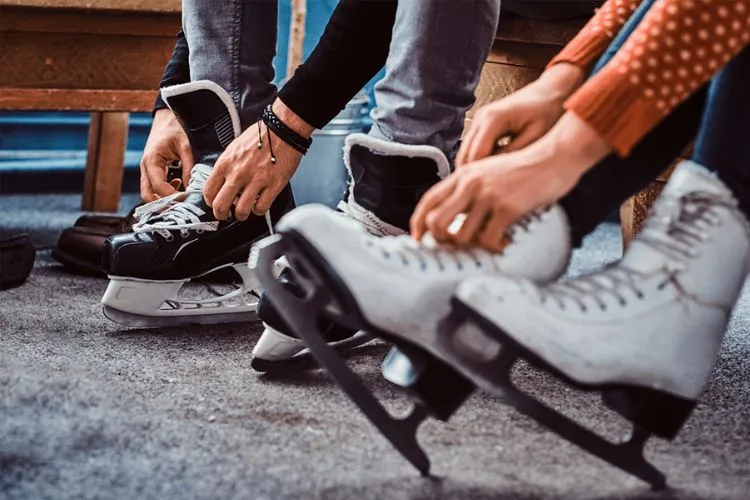
Adjusting the sharpening technique to create a more moderate hollow can mitigate this. Burn marks from excessive friction indicate the sharpening process was too rapid; slowing down and using a lighter touch prevents overheating.
Dull blades, resulting from insufficient sharpening, call for a reassessment of the sharpening equipment’s condition, possibly changing the grinding wheel or stone. Addressing these issues promptly can restore the integrity of the sharpening and enhance the skater’s experience.
Safety First: Proper Handling and Use of Sharpened Skates
Handling sharpened skates requires strict adherence to safety protocols to prevent accidents. Always wear cut-resistant gloves when touching skate blades to protect against cuts.
Before and after sharpening, inspect blades for damage that could compromise safety on ice. Transport and store skates with blade guards to shield the edges and surrounding objects.
Never walk on hard surfaces without guards, as this can damage the blades and create a safety hazard for both the skater and others.
Frequently Asked Questions (FAQs)
What do sharpened skates look like?
Sharpened skates have smooth, shiny edges and a clear, uniform hollow.
How can I tell if my skates need sharpening?
If you’re slipping on ice or having maneuver difficulties, it’s time for sharpening.
Does the type of ice affect how often skates need to be sharpened?
Yes, different ice types can dull blades at varying rates, affecting sharpening frequency.
How does the sharpening preference vary between hockey players and figure skaters?
Hockey players often prefer shallower hollows for speed, while figure skaters choose deeper hollows for precision.
What are the risks of skating on dull blades?
Skating on dull blades can lead to poor performance, increased injury risk, and reduced control on the ice.
Conclusion
Sharp skates are integral to a good performance on ice. Recognizing the signs of a well-sharpened skate and maintaining them is essential.
Regular checks and professional help can keep your skates in top condition.
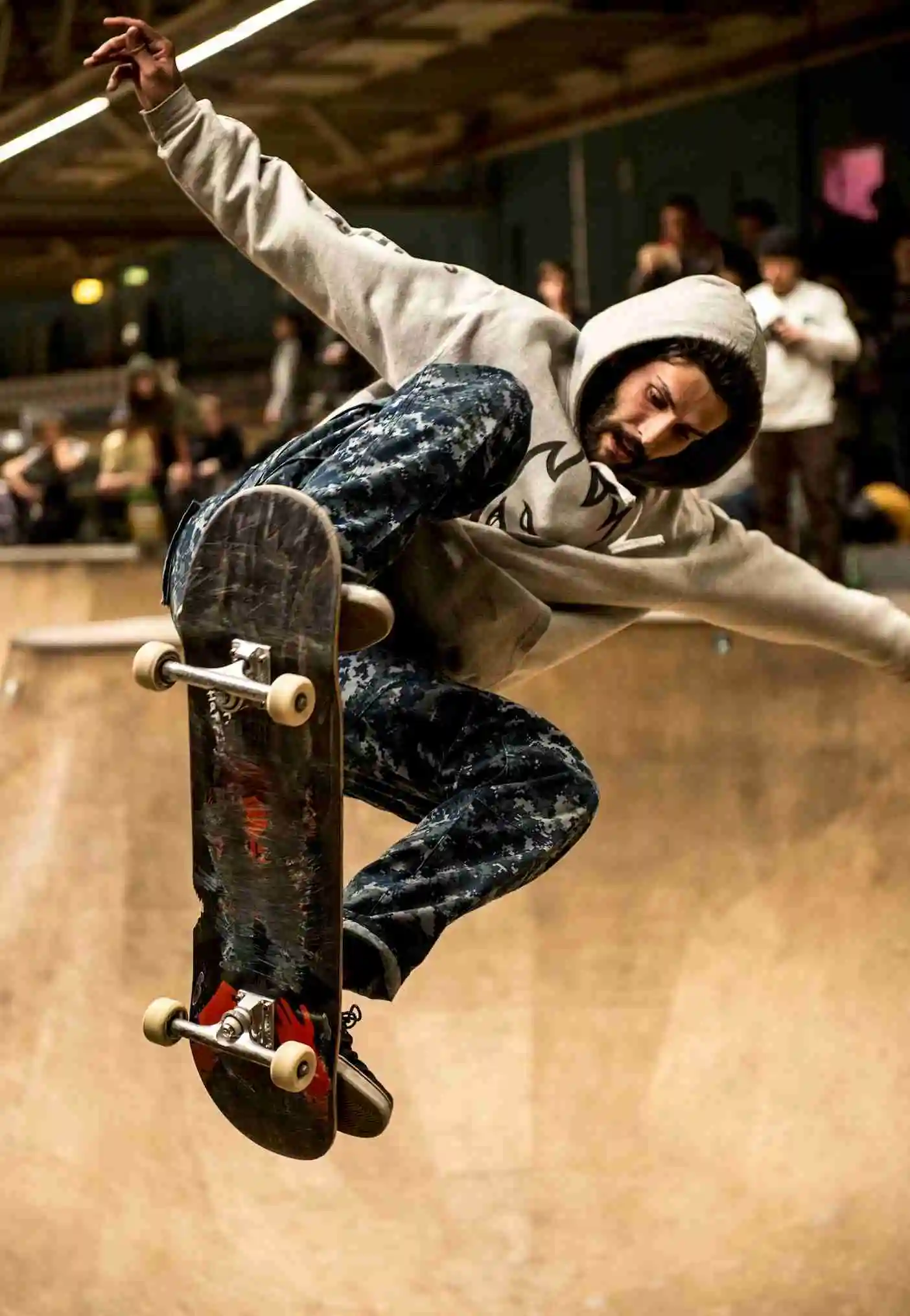
Matthew James is a passionate skater who wanted to create a platform to share his love for skating with others. With a vision to create a vibrant community of skaters, he aims to provide a space where skaters of all levels can connect, learn, and grow together.
